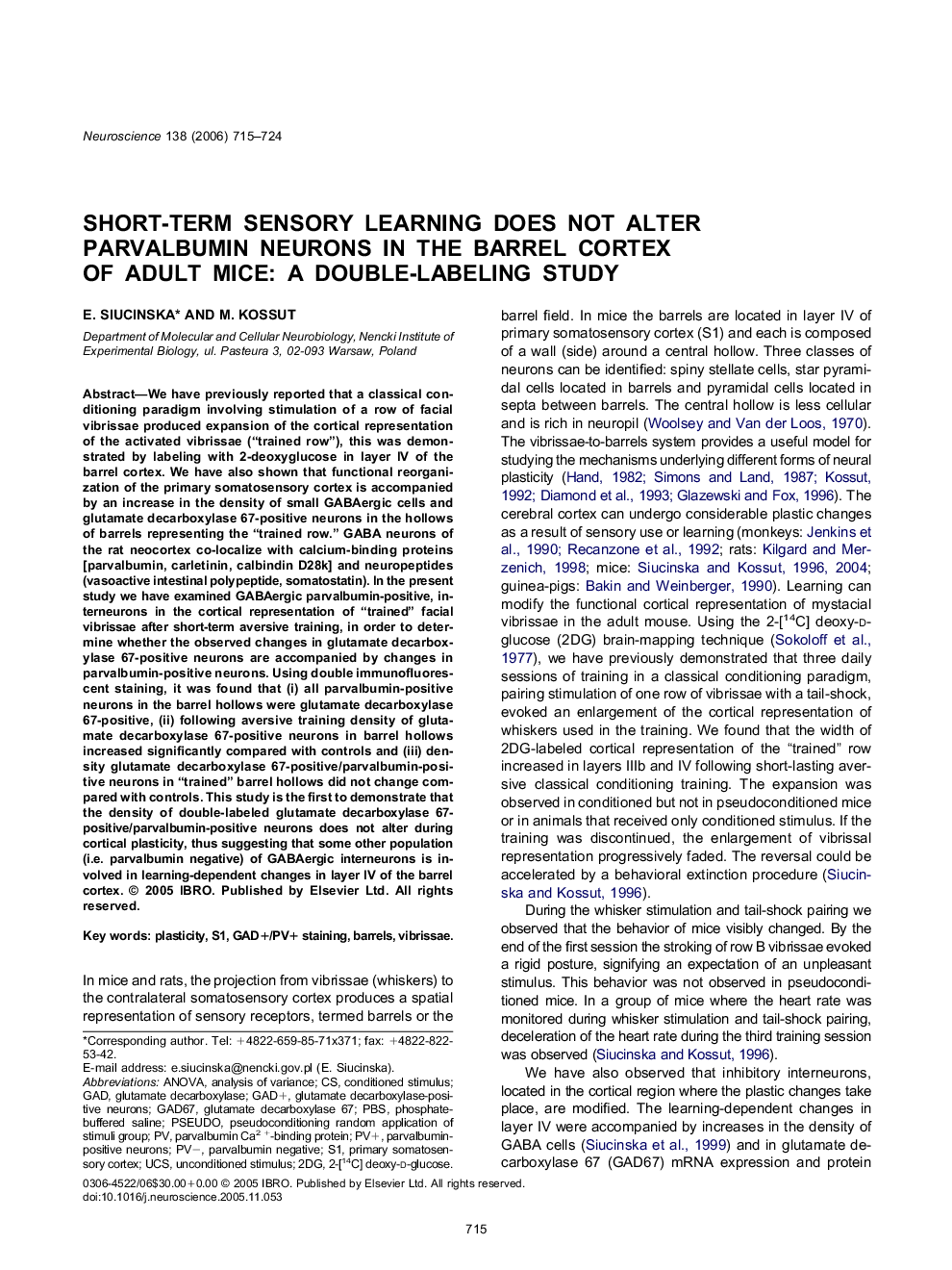| Article ID | Journal | Published Year | Pages | File Type |
|---|---|---|---|---|
| 4342514 | Neuroscience | 2006 | 10 Pages |
We have previously reported that a classical conditioning paradigm involving stimulation of a row of facial vibrissae produced expansion of the cortical representation of the activated vibrissae (“trained row”), this was demonstrated by labeling with 2-deoxyglucose in layer IV of the barrel cortex. We have also shown that functional reorganization of the primary somatosensory cortex is accompanied by an increase in the density of small GABAergic cells and glutamate decarboxylase 67-positive neurons in the hollows of barrels representing the “trained row.” GABA neurons of the rat neocortex co-localize with calcium-binding proteins [parvalbumin, carletinin, calbindin D28k] and neuropeptides (vasoactive intestinal polypeptide, somatostatin). In the present study we have examined GABAergic parvalbumin-positive, interneurons in the cortical representation of “trained” facial vibrissae after short-term aversive training, in order to determine whether the observed changes in glutamate decarboxylase 67-positive neurons are accompanied by changes in parvalbumin-positive neurons. Using double immunofluorescent staining, it was found that (i) all parvalbumin-positive neurons in the barrel hollows were glutamate decarboxylase 67-positive, (ii) following aversive training density of glutamate decarboxylase 67-positive neurons in barrel hollows increased significantly compared with controls and (iii) density glutamate decarboxylase 67-positive/parvalbumin-positive neurons in “trained” barrel hollows did not change compared with controls. This study is the first to demonstrate that the density of double-labeled glutamate decarboxylase 67-positive/parvalbumin-positive neurons does not alter during cortical plasticity, thus suggesting that some other population (i.e. parvalbumin negative) of GABAergic interneurons is involved in learning-dependent changes in layer IV of the barrel cortex.
